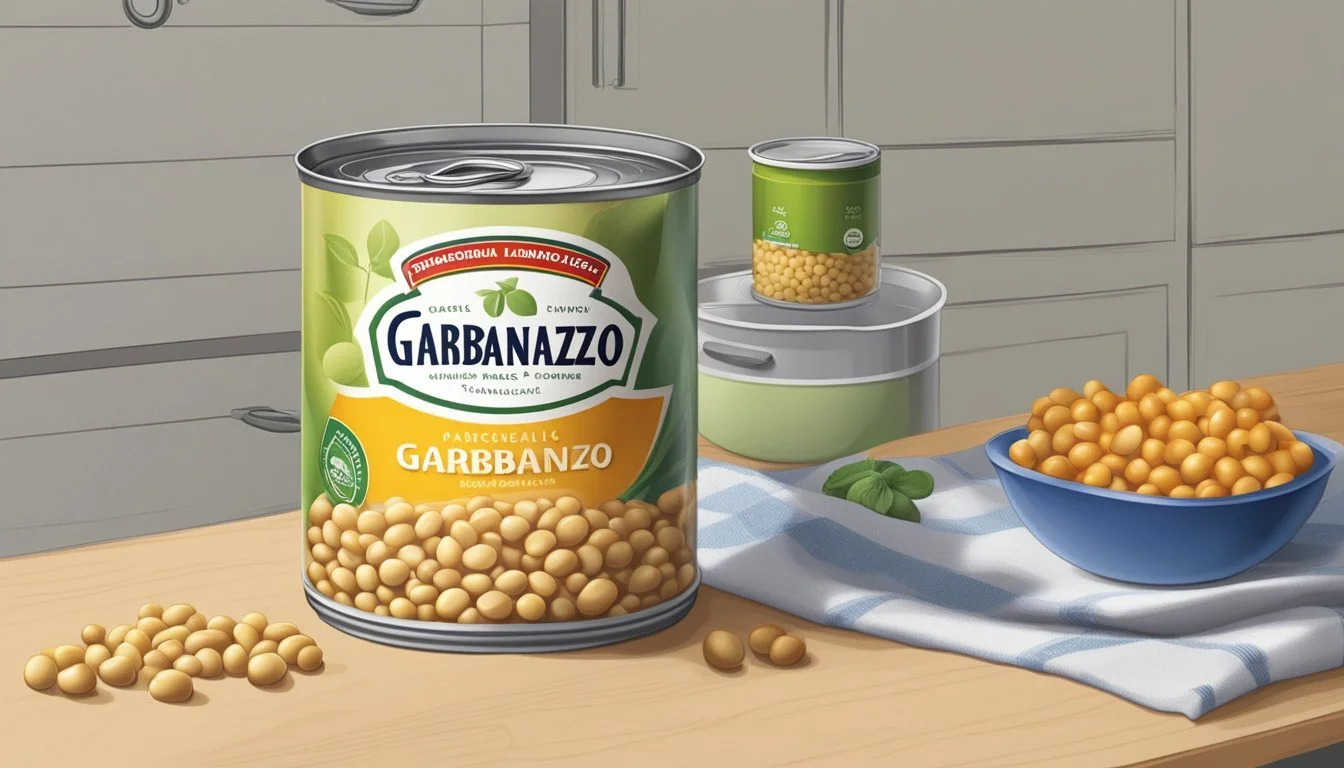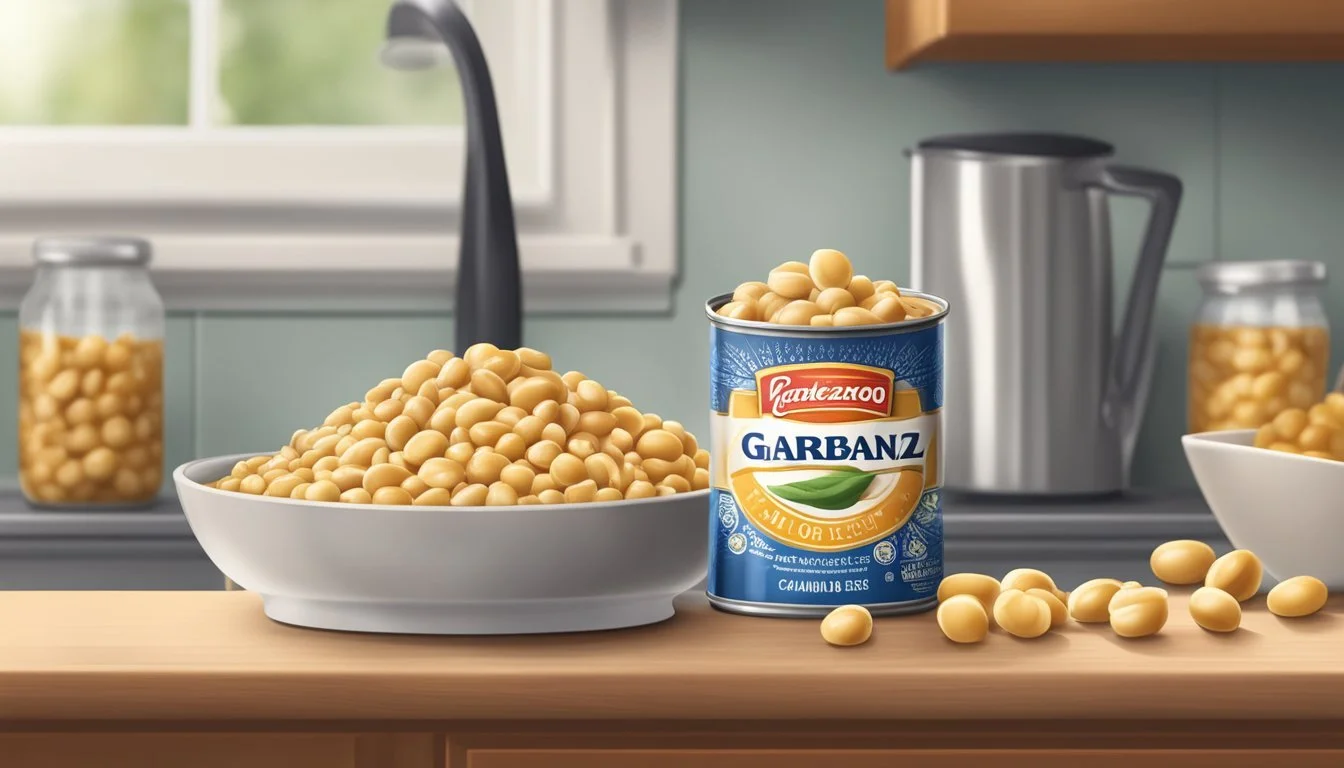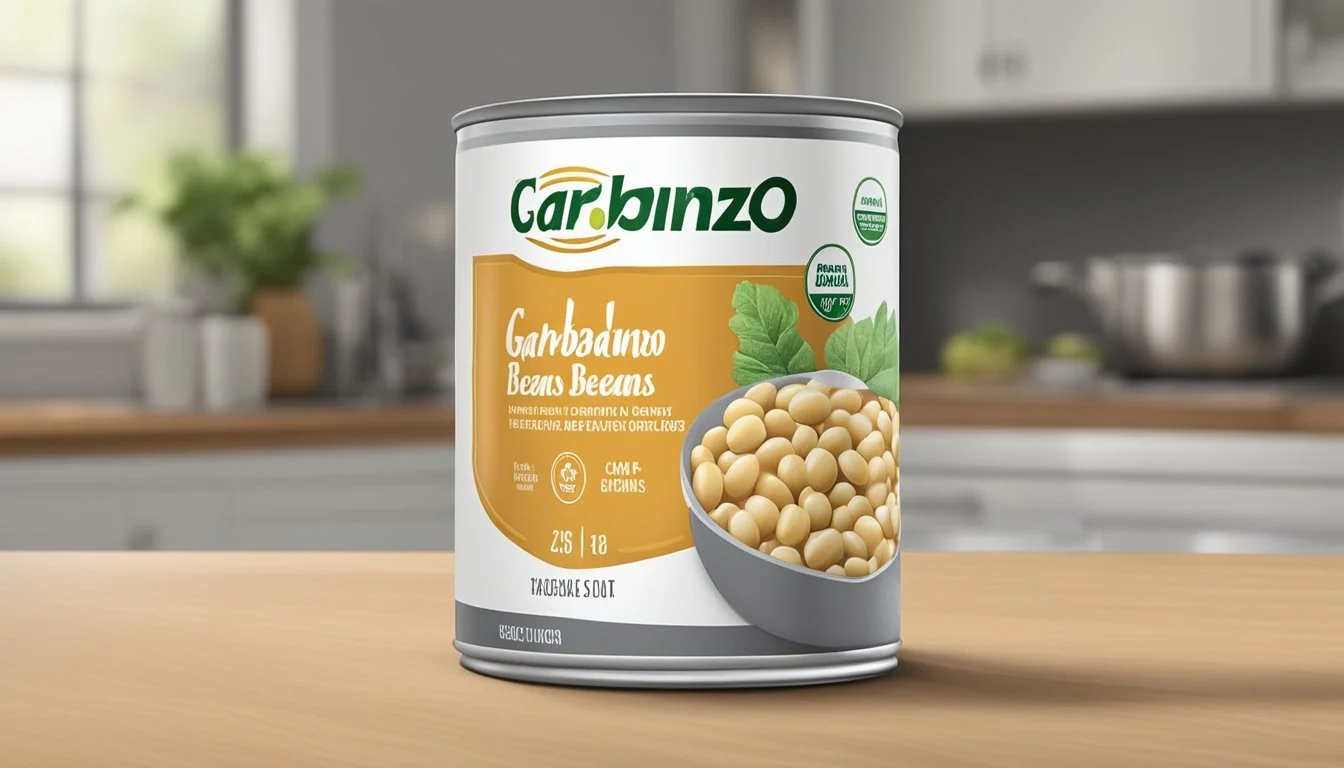How Many Ounces in a Can of Garbanzo Beans
Unveiling Standard Sizes and Measurements
When preparing recipes that call for chickpeas, also known as garbanzo beans, it's important to understand measurements and equivalences between dried beans and canned beans. Garbanzo beans are a staple in many kitchens due to their versatility, nutritional value, and prominence in a variety of cuisines. Canned garbanzo beans are a convenient option for cooks who may not have the time to soak and prepare dried beans.
A standard can of garbanzo beans typically contains 15 ounces of beans. However, this weight includes the liquid used to preserve the beans. When drained, the beans themselves weigh approximately 10 ounces. Knowing the drained weight is crucial for recipes that call for precise quantities of garbanzo beans to ensure the desired texture and flavor balance in dishes such as hummus, salads, and stews.
Understanding the conversion between dried and canned garbanzo beans is also valuable for those who prefer to use dried beans or are looking for a cost-effective alternative. Generally, half a cup of dried beans equates to 1½ cups of cooked beans once prepared, which is roughly the amount of beans you would get from one standard 15-ounce can of garbanzo beans. This knowledge allows for accurate recipe adjustments and helps maintain the integrity of the dish being prepared.
Understanding Can Sizes and Volume
In the context of canned goods, such as garbanzo beans, understanding can sizes and their respective volumes is essential for accurate recipe measurements and pantry stocking.
Common Can Sizes
Typically, canned garbanzo beans come in several standard sizes. The most commonly found sizes and their approximate volumes are as follows:
No. 300 can: Contains about 1 ¾ cups of garbanzo beans, translating to approximately 14 to 16 ounces of product.
No. 303 can: Slightly larger than a No. 300, this holds around 2 cups or 15 to 17 ounces.
No. 2 can: Often considered the "standard" size for recipes, it has approximately 2 ½ cups of beans or about 20 ounces.
Volume Measurement Standards
Volumes for cans are usually given in both fluid ounces (a measure of volume) and net weight (a measure of mass). For liquids, fluid ounces and weight ounces are interchangeable, but for solids like garbanzo beans, weight ounces indicate the weight of the beans without any liquid.
Cups: 1 cup is equal to 8 fluid ounces.
Pints: 1 pint is equivalent to 2 cups or 16 fluid ounces.
Metric conversions: For those using the metric system, 1 ounce equates to approximately 28.35 grams, and 1 cup is about 237 milliliters.
Cooks may need to convert these measurements depending on their recipes, which is often done using a standard conversion chart or a kitchen scale for precise ingredient quantities.
Weight and Volume Conversions
When converting the weight and volume of garbanzo beans, it is important for a reader to understand the specific conversions between ounces, cups, and grams. This ensures accurate measurements whether one is following a recipe or portioning for meal preparation.
From Ounces to Cups
Most cans of garbanzo beans list their weight in ounces on the label. A typical can is 15 ounces gross weight, but the drained weight is often about 10 ounces. For culinary purposes, once drained, the contents of a standard 15-ounce can of garbanzo beans equals approximately 1.87 cups.
Drained Weight (Ounces to Cups Conversion):
10 oz (drained) ≈ 1.87 cups
This conversion is useful for accurate recipe adaptations, especially when a recipe calls for a volume measurement of beans rather than weight.
Conversion Factors for Different Beans
While the conversion factor for garbanzo beans is specific, different types of beans have varying densities and therefore different conversion factors. For instance, a heaping 1/2 cup of dried beans typically equates to one 15-ounce can of beans.
General Conversion Rule of Thumb:
1/2 cup dried beans ≈ 15 oz can
Conversions also apply when dealing with uncooked beans. It's generally accepted that:
Uncooked Beans to Cooked:
1/2 cup dried beans ≈ 1.5 cups cooked beans
1 lb dried beans ≈ 6 cups cooked beans
These approximations are subject to slight variations depending on the specific type of bean and cooking method used. It's important to keep in mind these are close estimates to guide when exact measurements are not available.
Nutritional Value of Garbanzo Beans
Garbanzo beans, commonly known as chickpeas, provide a rich source of protein, fiber, and essential minerals. Their nutritional composition makes them a valuable addition to any diet.
Health Benefits
Garbanzo beans are a nutrient-dense food, meaning they are low in calories but high in vitamins and minerals. They do not contain cholesterol, making them a heart-healthy choice. The substantial fiber content in garbanzo beans helps with digestive health and can aid in weight management by promoting a feeling of fullness. Additionally, they are a source of important minerals such as iron, magnesium, and potassium, which are vital for maintaining bodily functions.
Protein and Fiber Content
A half-cup serving of canned garbanzo beans typically contains around 9 grams of protein, which is essential for muscle repair and growth. Their protein content makes them an excellent option for vegetarians and vegans looking for plant-based protein sources. Furthermore, garbanzo beans contain about 5 grams of dietary fiber per half-cup serving, which supports a healthy digestive system and may contribute to lower blood cholesterol levels. This combination of protein and fiber in garbanzo beans exemplifies their value in creating balanced meals.
Nutrient Amount per ½ cup of canned garbanzo beans Calories ~120 kcal Protein ~9g Dietary Fiber ~5g Fat ~1.5g Sodium ~200mg Carbohydrates ~18g Cholesterol 0g
By incorporating garbanzo beans into the diet, individuals can benefit from their nutritional value, which supports overall health and well-being.
Culinary Uses of Garbanzo Beans
Garbanzo beans, also known as chickpeas, serve as a versatile ingredient in numerous dishes, contributing unique flavors and textures. Their use in cooking ranges from basic recipes to complex gourmet meals.
Incorporating into Recipes
Garbanzo beans are a staple in various cuisines across the world. They can be easily incorporated into a wide range of recipes due to their adaptability:
Soups and Stews: They add heartiness and are a key ingredient in many recipes like Mediterranean stews or Indian-style chana masala.
Salads: Cooked garbanzo beans provide texture and protein, making salads more filling.
Hummus: These beans are the primary ingredient in hummus, blended with tahini, lemon juice, and garlic into a creamy spread.
Vegan Dishes: As a protein-rich legume, garbanzo beans are essential in vegan cooking for dishes like falafel, vegan burgers, and plant-based chili.
Texture and Flavor Contributions
The texture and flavor of garbanzo beans are significant:
Texture: They offer a satisfying, chewy texture when included in salads or soups and can be processed into a smooth, creamy consistency for recipes like hummus or vegan cream sauces.
Flavor: Their mild, nutty flavor complements a variety of seasonings and ingredients, allowing them to be a versatile component in both savory and slightly sweet dishes.
Incorporating garbanzo beans into recipe ideas enhances nutrition and allows for creative cooking explorations, whether one is making a spicy chili, a refreshing salad, or a rich, savory stew.
Preparing Garbanzo Beans
The preparation of garbanzo beans involves specific cooking times and soaking methods to ensure a tender and flavorful result. Proper techniques can greatly improve their texture and digestibility.
Cooking Times and Methods
Stovetop: Garbanzo beans typically require about 1 to 2 hours of cooking time on the stovetop. Once they're soaked and tender, they should be covered with water and brought to a boil. The heat is then reduced to a simmer, and the beans should be cooked until they reach the desired tenderness.
Pre-soaked Beans: 1 to 2 hours
Unsoaked Beans: 2 to 3 hours
Instant Pot: An Instant Pot reduces the cooking time significantly. Soaked garbanzo beans usually take about 15 to 20 minutes under high pressure with a natural release of around 15 minutes. For unsoaked beans, the cooking time extends to about 50 minutes on high pressure with the same natural release period.
Pre-soaked Beans: 15-20 minutes + 15 minutes release
Unsoaked Beans: 50 minutes + 15 minutes release
Soaking and Tenderizing Techniques
Soaking: Soaking beans overnight is a common method used to tenderize garbanzo beans and to shorten their cooking time. They should be submerged in water, allowing around 2 to 3 inches of water above the beans to account for expansion.
Overnight Soak: 8 to 12 hours in water.
Quick Soak: Boil for 2 minutes, then let stand for 1 hour.
Tenderizing: Adding baking soda during cooking can help to soften the beans further and reduce cooking time. One should combine 1 teaspoon of baking soda with every 8 ounces of beans during the initial cooking phase. This should be done whether cooking on the stovetop or in an Instant Pot. It's also important to skim off any foam that forms at the top of the cooking liquid to keep it clear.
It's crucial to consider the cooking method and whether the beans have been pre-soaked to determine the right cooking time and tenderizing techniques, resulting in the perfect garbanzo beans for any recipe.
Substituting Different Beans in Recipes
When altering a recipe with different types of beans, one must consider their unique flavors, textures, and cooking times. Successful substitutions can keep the integrity of the dish while allowing for variety or availability.
Interchanging Bean Varieties
Cooks can interchange various bean varieties in recipes, but should be aware of the distinct characteristics of each type. Chickpeas (also known as garbanzo beans) are versatile with a nutty taste suitable for salads and hummus. Kidney beans, both light and dark red, are robust and hold up well in soups and chili. Black beans are a staple in Latin American cuisines, while lima beans possess a starchy quality that thickens dishes effectively. Pinto beans are commonly used in Mexican recipes and are known for their creamy texture when mashed.
For navy beans, Great Northern beans, and cannellini beans, which are all mild in flavor and soft in texture, the chef can choose one over the others without greatly affecting the outcome. Soybeans and black-eyed peas are less common substitutes due to their distinct flavors and textures. Lentils, with their quick cooking time, can be a substitute in dishes requiring less structural integrity from the beans.
Adjustments for Taste and Texture
Substitutions may require adjustments in spices and cooking times. Stronger flavored beans such as kidney beans might need a reduction in additional spices like chili powder to prevent overpowering the dish. When replacing a firmer bean with a softer one, such as substituting cannellini beans for Great Northern beans, one may have to shorten the cooking time to maintain the desired consistency.
Incorporating vegetables like spinach or tomatoes can complement the substituted beans and balance the dish’s flavor profile. When working with dried beans, it's crucial to account for their expansion after soaking and cooking. A common conversion is that a 15-ounce can of canned beans equates to approximately 1/2 cup of dried beans, which will yield around 1.5 cups of cooked beans. For precise texture control, cooking dried beans separately before adding them to recipes is advisable.








